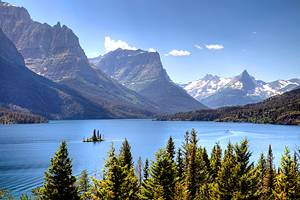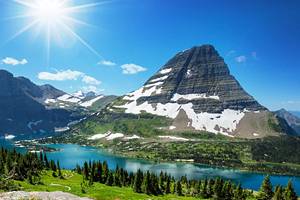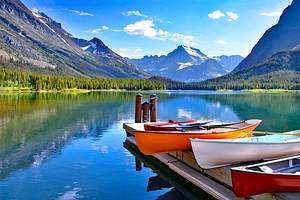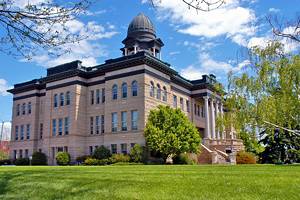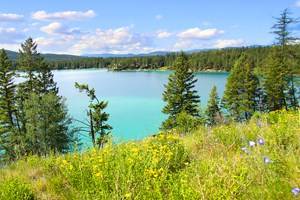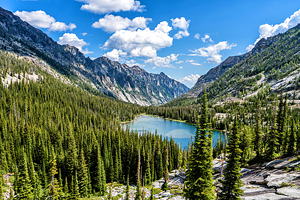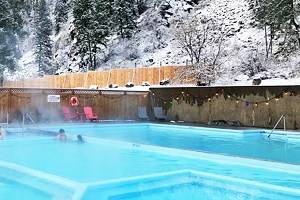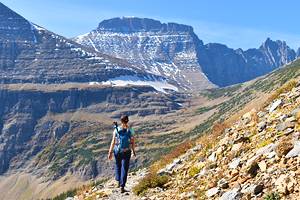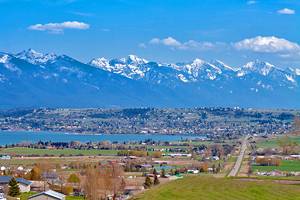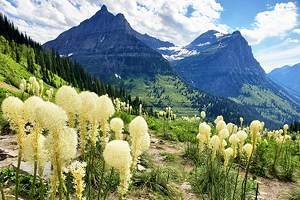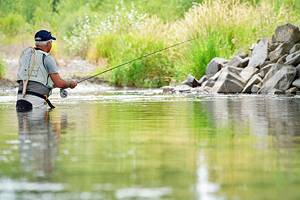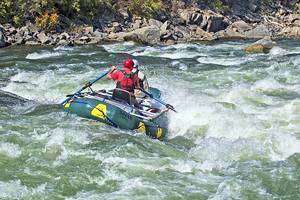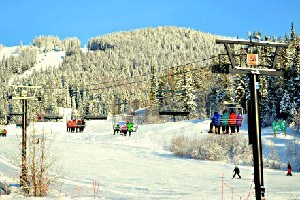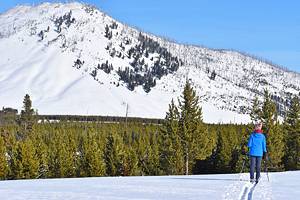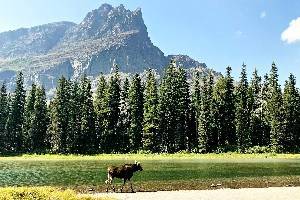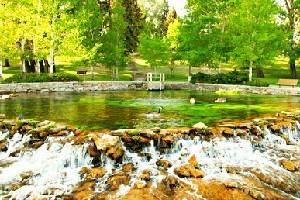Hiking Trails in Montana
Author Brad Lane hiked extensively throughout Montana while living in the state.
From awe-inspiring hikes in Glacier National Park to The Beaten Path, the best hiking trails in Montana display the wild and rugged nature of the state. Alpine lakes, wild rivers, high-mountain meadows, and a menagerie of wildlife await along these wandering paths, displaying scenery exclusive to Big Sky Country.
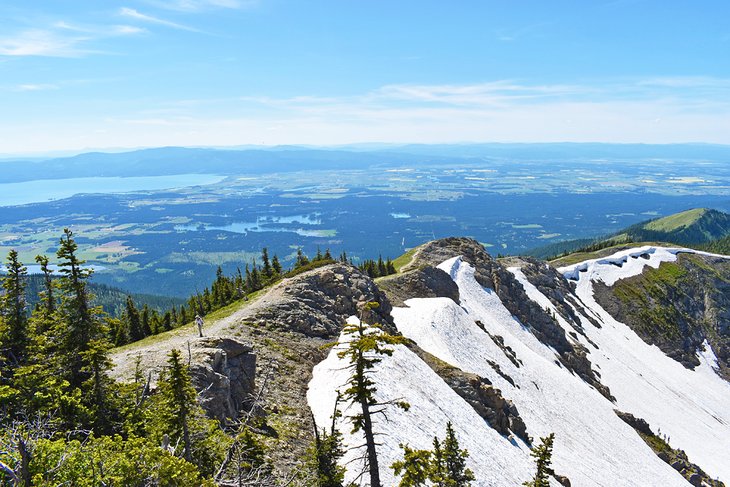
The numerous national forests in the western half of the state are true hot spots for great hiking trails. From the giant cedars in Kootenai National Forest to the ice caves in Helena-Lewis and Clark National Forest, as well as the Crazy Mountains in Custer Gallatin National Forest, the abundance of public space in Montana is nearly overwhelming. Glacier National Park, also known as the Crown of the Continent, itself has over 700 miles of hiking trails to explore.
Glacier National Park, also known as the Crown of the Continent, itself has over 700 miles of hiking trails to explore. And it's not just the western half of the state that's worth exploring. Formidable badland formations offer unique hiking trails farther east towards the North Dakota border.
For thru-hikes in Montana, the Pacific Northwest Trail and Continental Divide Trail both have terminuses in Big Sky Country. Plan your outdoor adventures with our list of the best hiking trails in Montana.
- Highline Trail, Glacier National Park
- Mount Aeneas, Jewel Basin Hiking Area, Flathead National Forest
- Beehive Basin Trail, Big Sky
- Holland Falls National Recreation Trail, Flathead National Forest
- The Beaten Path, Beartooth Mountains
- Trapper Peak, Bitterroot National Forest
- Ross Creek Nature Trail, Ross Creek Cedars Scenic Area, Kootenai National Forest
- Stuart Peak, Rattlesnake National Recreation Area, Lolo National Forest
- Sweetgrass Trail, Crazy Mountains
- Ice Caves Trail, Crystal Lake, Helena-Lewis and Clark National Forest
- Natural Bridges Trail, Terry Badlands Wilderness Study Area
- Mount Sentinel "M" Trail, Missoula
- Continental Divide National Scenic Trail
- Pacific Northwest National Scenic Trail
- Map of Hiking Trails in Montana
Highline Trail, Glacier National Park
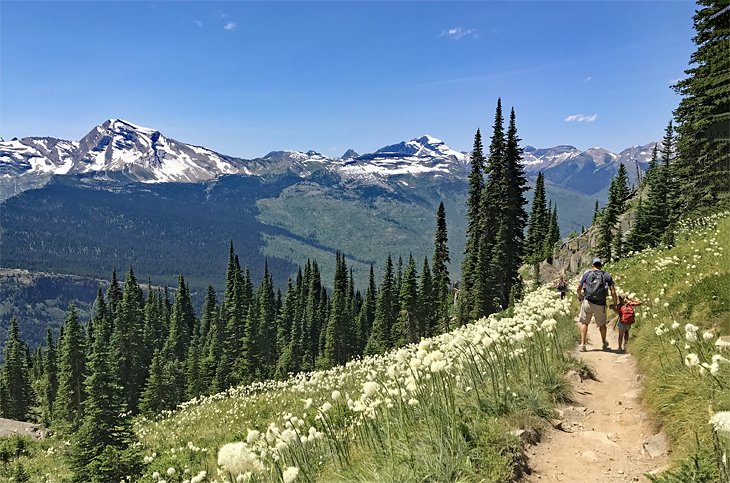
Over 700 miles of trails cross through the Crown of the Continent in northwest Montana, also known as Glacier National Park. This sprawling trail system offers a kid-in-a-candy-shop opportunity for hikers and backpackers. This abundance of hiking and outdoor exploring brings approximately three million visitors to Glacier each year.
Hiking trails in Glacier traverse steep mountain passes; stumble upon hidden lakes; and cross paths with numerous wildlife habitats, including marmot, mountain goat, and grizzly bear. And the scenery along the way includes deep glacial valleys, imposing mountain peaks, and hundreds of shimmering alpine lakes.
If not the best, the Highline Trail is one of the most iconic hiking trails in Glacier. It departs from the highest point of the park accessible by vehicle, Logan Pass, and navigates a relatively flat 7.6 miles to the Granite Park Chalet. And lining the entire route are stunning views of the massive mountains that make Glacier National Park an international destination.
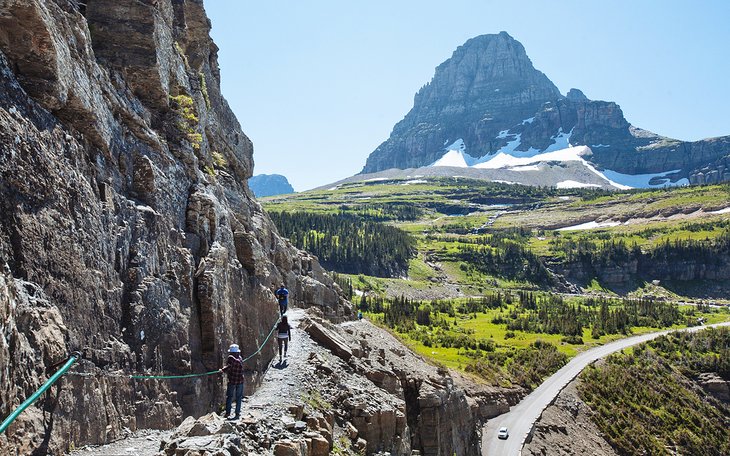
Near the beginning of the hike, a steep ledge portion does put some fear of heights to the test. But the walkway is plenty wide to accommodate two-way traffic. It's a long walk to Granite Park Chalet, where visitors need to figure out the best way to get back to their car.
The Highline Trail is the glacial tip of hiking in the park. Several other trailheads line the 50-mile Going-to-the-Sun Road, spanning the park from east to west. And like Two Medicine and Many Glacier, other park regions also support healthy trail networks. It's highly recommended to spend more than a couple of nights within one of the park's campgrounds to make the most out of exploring,
- Read More: Things to Do in Glacier National Park
Mount Aeneas, Jewel Basin Hiking Area, Flathead National Forest
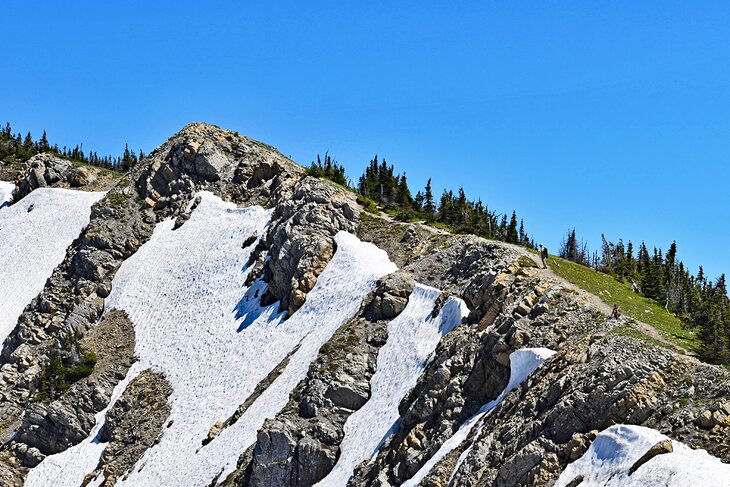
Jewel Basin is a unique hiking and backpacking-only destination at the northern end of the Swan Mountain range, 30 miles east of Kalispell near Flathead Lake. It's part of and managed by Flathead National Forest. Over 35 miles of hiking trails wind throughout this alpine environment dotted with lakes, where stocked bodies of water invite anglers to pack their fishing poles.
One of the most common places to access Jewel Basin is Camp Misery Trailhead. A bumpy and inclined forest service road leads to this high-elevation trailhead, where high-clearance vehicles are recommended. Make it to Camp Misery, however, and there'll be no disappointment in hiking options.
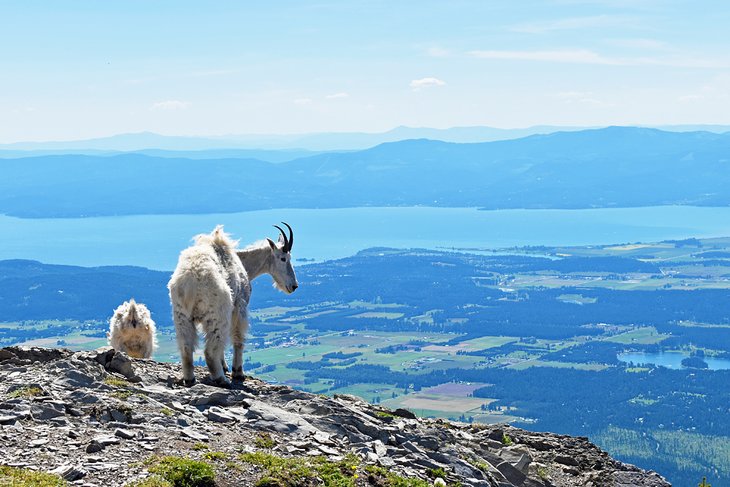
A popular trip from the trailhead is a looped trail that leads to the top of Mount Aeneas, the tallest peak within the hiking area. It's between four and six miles one-way depending on the trail of choice, with approximately 1,800 feet of elevation gain. Expect to see some mountain goats along the way, and a 360-degree view of the mountain environment.
Birch Lake is another popular destination in Jewel Basin, accessible with a moderately flat three-mile hike from the Camp Misery Trailhead. Hikers can extend their adventures from Birch Lake by continuing another three miles down the trail to the deeper waters of Crater Lake.
Despite its designation as hiking only, Jewel Basin receives quite the crowds during the summer months, and visitors should expect to share the trails.
Read More: Things to Do in Flathead National Forest
Beehive Basin Trail, Big Sky
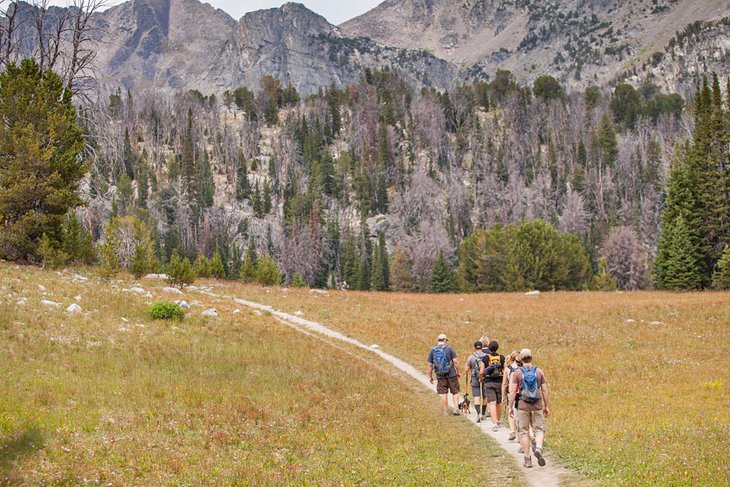
Not far from the chairlifts of Big Sky Resort — one of the best ski resorts in Montana — the hike into the Beehive Basin glacier cirque is consistently regarded as one of the best day hikes in the country.
From the Beehive Basin Trailhead, it's just over three miles to reach Beehive Basin with approximately 1,500 feet of elevation gain. The trail is well-marked and well-traveled, and the view of the imposing Lone Peak and pristine alpine meadows encourages hikers to take their time with a visit.
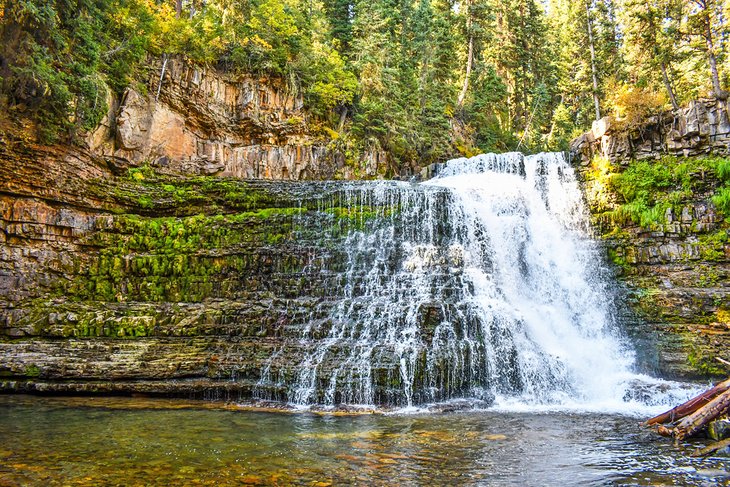
Another popular hike in the Big Sky area is Ousel Falls, with a starting point located only 10 miles from the Beehive Basin Trailhead. Offering a family-friendly, two-mile round trip, the trail to Ousel Falls is wide and well-maintained and located close to the Big Sky town center.
Farther north on Highway 191, the Lava Lake Trail offers a more challenging six-mile round trip with scenic lakeside views. Beehive Basin and these surrounding trails are just the tip of the many fun things to do in Big Sky. And all three hikes are accessible from Bozeman with a scenic 50-mile drive.
Holland Falls National Recreation Trail, Flathead National Forest
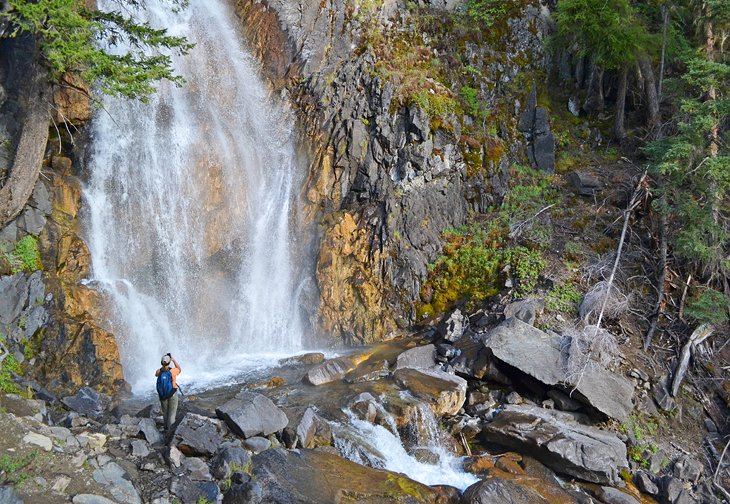
Holland Lake is within the lush Seeley-Swan Valley in Northwest Montana. It's flanked by the Swan and Mission Mountains, with natural and recreational appeal lining its generous banks. Alongside a popular lakeside campground and resort, Holland Lake also provides an easy day hike to a stunning waterfall with a great view.
First following the even grade of the shoreline, this 1.6-mile national recreation trail ascends roughly 750 feet to reach the falls. From the falls, the vantage point of Holland Lake, backed by the Swan Mountains, is simply breathtaking, and the 50-foot waterfall itself is easy to admire.
Visitors tend to hang by the lake after completing the relatively short hike, where it feels good to dip their toes in or go for a swim. Holland Lake, one of the best lakes in Montana, shares the same wondrous mountain backdrop. It's a popular lake for fishing and boating, including stand up paddleboarding and canoeing.
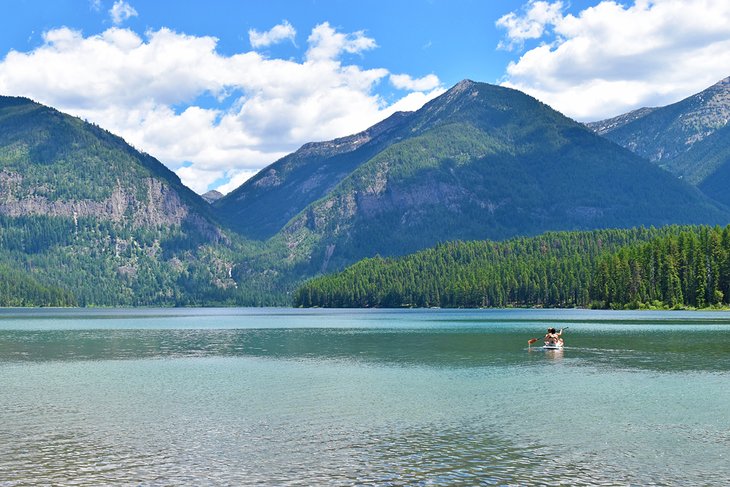
Plenty more breathtaking hiking trails are found throughout the Seeley-Swan Valley between Big Fork and Seeley Lake, including the popular Morrell Falls National Recreation Trail located farther south along Highway 83.
Traversing 2.7 miles to a 90-foot double waterfall, Morrell Falls and the adjacent Morrell Lake offer equally stunning views of the Swan Mountains.
The Beaten Path, Beartooth Mountains

The Beaten Path, also known as East Rosebud Trail, is a stunning alpine trek through the Absaroka-Beartooth Wilderness in southern Montana. It spans 26 miles from East Rosebud Lake near Red Lodge to the Clarks Fork Trailhead on the Beartooth Highway. Along the way, the surrounding wilderness reveals stunning alpine lakes, prominent peaks, and a sense of exploration far off the normal path.
While marathon hikers can accomplish the hike in a single day, most take their time exploring the deep wilderness with a backpacking trip. The route typically takes three to five days, with plenty of side routes available and generous elevation gains. Alternatively, day hikers can make an out-and-back journey to places like Elk Lake or Rimrock Lake.
Most hikes start at East Rosebud Lake. This direction is a little more uphill but affords the best views. Shuttling a car is a big logistic of hiking The Beaten Path. It's approximately three hours of driving to connect the two trailheads. The best option is a planned key exchange with another hiking party along the trail.
Trapper Peak, Bitterroot National Forest
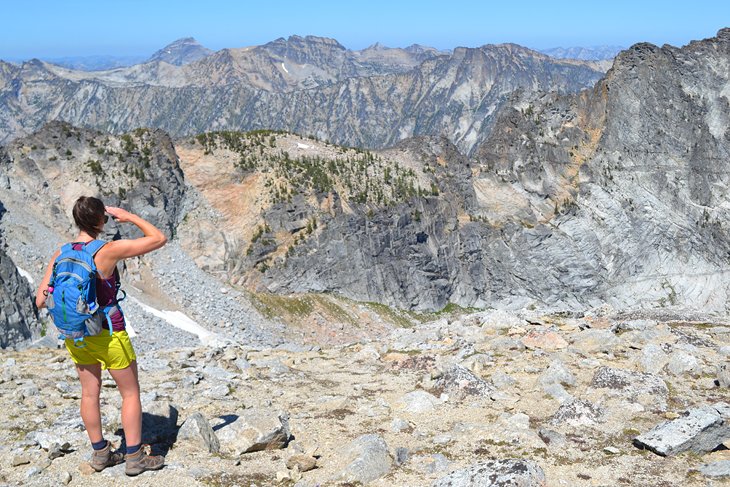
The Bitterroot Mountains straddle the Idaho Panhandle in southwest Montana and are part of the 1.6-million-acre Bitterroot National Forest alongside the Sapphire Mountains to the east. Elevations in the Bitterroots span from 3,200 feet in the Bitterroot Valley to 10,157 feet at the top of its tallest mountain, Trapper Peak.
A few different routes ascend to the top of Trapper Peak. The standard hike departs from the Trapper Peak Trailhead and climbs nearly 4,000 feet in just over four miles to the summit. The trail is steadily steep and well-marked and not technically demanding until perhaps the very end, where a short but low-exposure scramble leads to the top.
Alternative and more demanding Trapper Peak summit hikes lead past Gem and Baker Lakes and involve more wayfinding. The traditional trek to Trapper Peak is challenging enough, and alternative routes should be attempted by experienced athletes only.

Other popular peaks to nab in the Bitterroot Mountains include Lolo Peak and St. Mary Peak. It's not just summit hikes in the Bitterroot Mountains, though, with other trails like the Kootenai Creek Trail and Blodgett Canyon leading to stunning waterfalls and other natural features.
Over 20 National Forest Service campgrounds spread throughout the forest, close to several trailheads.
Ross Creek Nature Trail, Ross Creek Cedars Scenic Area, Kootenai National Forest
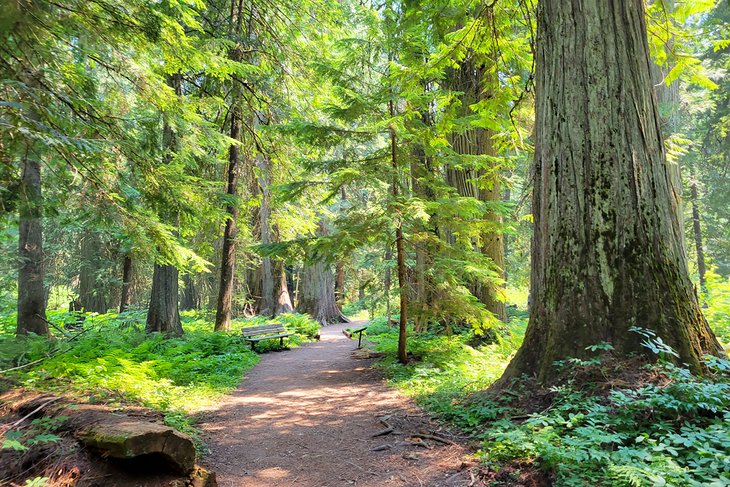
In far northwest Montana near the Idaho border, within Kootenai National Forest, the Ross Creek Cedars Scenic Area is home to trees that have been growing for over 500 years. The best way to experience the Ross Creek Cedars is by taking a self-guided hike along the Ross Creek Nature Trail. Interpretive information lines this less-than-a-mile loop alongside several giant western cedars.
Expect crowds to gather at Ross Creek throughout the summer. Because of its non-existent elevation gains, the area is popular for large family hikes. Still, there are plenty of trails and tall trees around, leaving space to admire the landscape on your own. For a bigger day hike, Ross Creek Trail continues from the grove for just over four miles.
Stuart Peak, Rattlesnake National Recreation Area, Lolo National Forest
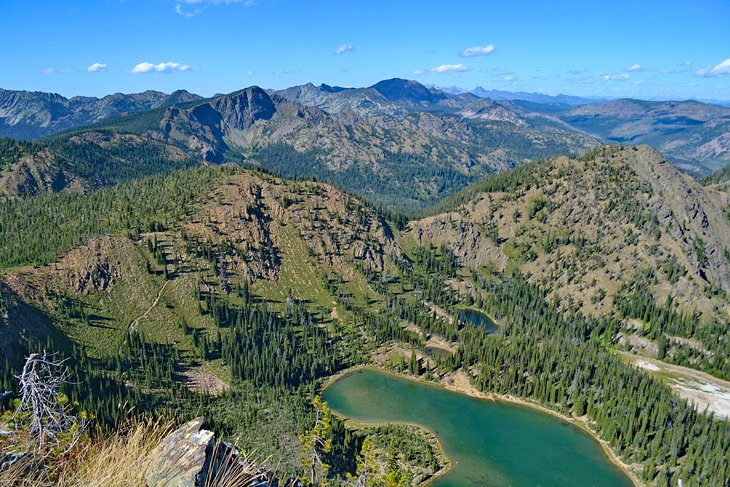
The university city of Missoula in western Montana is surrounded by great hiking destinations. Accessible with a six-mile drive (or bike ride) from downtown, the Rattlesnake National Recreation Area is one of the most popular and closest networks of trails to the city. The Rattlesnake Main Trailhead offers numerous trails to explore, including a route to the prominent 7,980-foot Stuart Peak.
It's roughly 10 miles from the main trailhead up to Stuart Peak, with over 4,500 feet of elevation gain. A stout day hike, the trail is also well-traveled by backpackers looking to spend the night next to alpine lakes. Mountain bikers have the option to make quicker miles on the trail until the route crosses into the designated Rattlesnake Wilderness, approximately seven miles from the main trailhead.
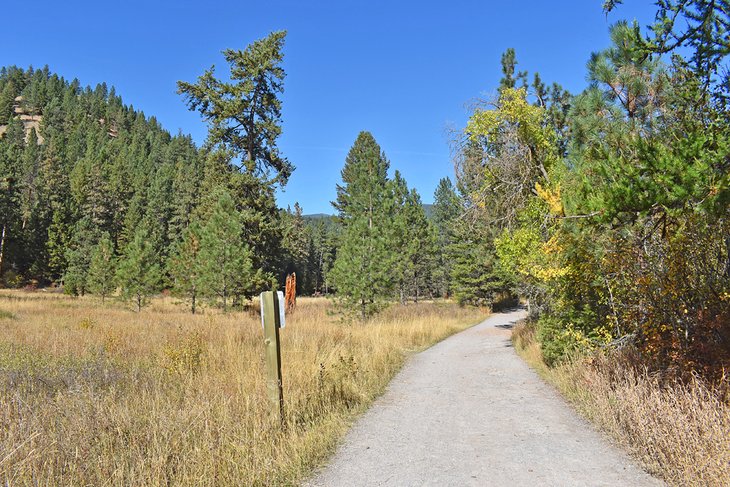
The trail to Stuart Peak utilizes the Spring Gulch trail, with other popular gulch routes in the area, including Sawmill Gulch and Curry Gulch. Less strenuous hiking opportunities stem from the main trailhead, including the Main Corridor trail, which extends over 14 miles with minimal elevation gain.
For more hiking trails close to Missoula, both Pattee Canyon and Blue Mountain Recreation Areas are also within the Lolo National Forest and adjacent to the city.
Sweetgrass Trail, Crazy Mountains
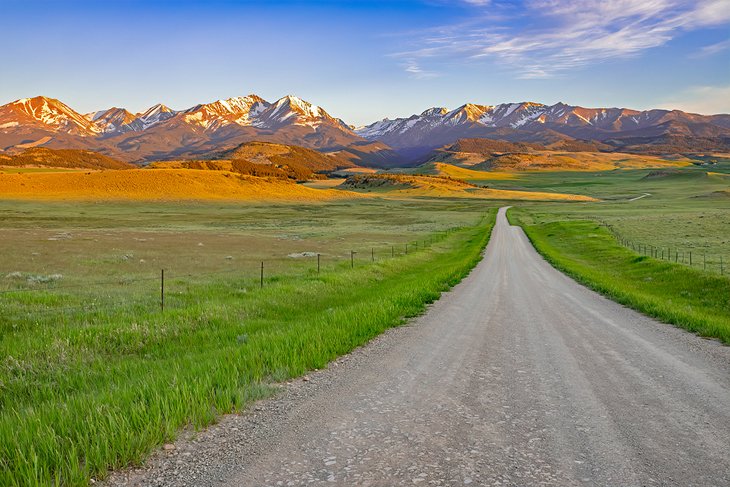
The Crazy Mountains are an island mountain range in south-central Montana. They rise from a flat prairie environment with significant prominence and unearth a plethora of alpine lakes to explore.
The mountains are mainly within the Custer-Gallatin National Forest, dotted with privately owned parcels of land, where hikers are asked to stay on designated trails as they pass through. The most popular place to hike into the Crazy Mountains is from the Halfmoon Campground, located 25 miles from the city of Big Timber.
From Half Moon Campground, hikers start on the 2.9-mile Big Timber Creek Trail to access the Sweetgrass Trail. Popular with backpackers and strong day hikers alike, the near 17-mile Sweetgrass Trail spawns many side adventures into the Crazy Mountains, including destinations like Thunder Lake and Twin Lakes.
Hikers should familiarize themselves with a map of the area before heading into the Crazy Mountains to avoid trespassing on private property.
Ice Caves Trail, Crystal Lake, Helena-Lewis and Clark National Forest
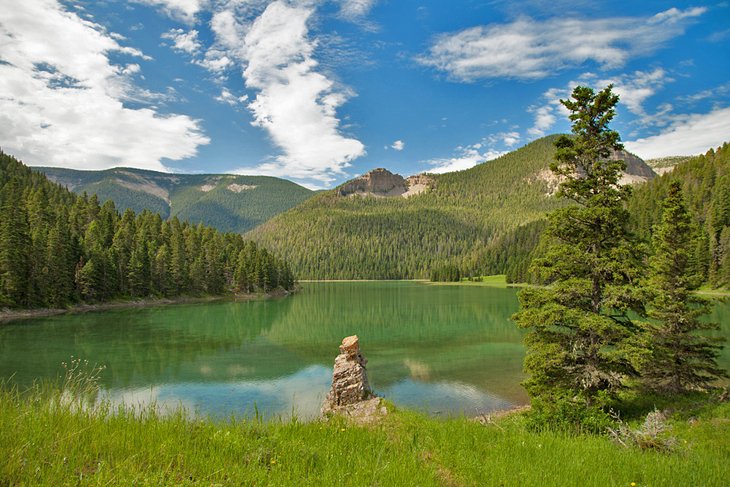
In the Big Snowy Mountain range of central Montana, 30 miles south of Lewistown, this unique trail leads to year-round ice caves that are accessible to visitors. Departing from Crystal Lake Campground, this five-mile trail ascends over 2,200 feet in the first three miles before traversing the flat top of the Snowy Crest to the ice caves.
Alongside the slippery interiors of these unique caves, generous views of surrounding mountain ranges like the Crazy Mountains can be spotted while traversing the Snowy Crest. Visitors need to take caution along the trail, which is highly exposed atop the crest. And the ice caves are truly slippery, even with heavy-duty hiking boots. Traction devices are recommended for exploring further.
Natural Bridges Trail, Terry Badlands Wilderness Study Area
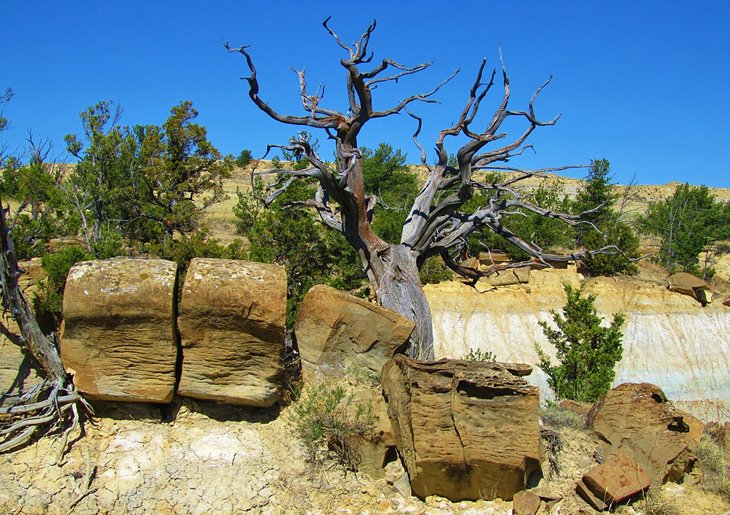
The Terry Badlands presents a unique and rugged landscape found in few other parts of the state, 40 miles northeast of Miles City in eastern Montana near the North Dakota border. Visitors travel to this remote region to admire sandstone spires and buttes and otherworldly attributes like petrified wood.
Hikers wanting to visit the Terry Badlands have a couple of options to get there, including the Big Sky Backcountry Byway (State Route 253) or the non-maintained Calypso Trail (4WD recommended). The Natural Bridge Trailhead is found at the end of the Calypso Trail, and the namesake rock formations are discovered a mile from the trailhead.
Mount Sentinel "M" Trail, Missoula
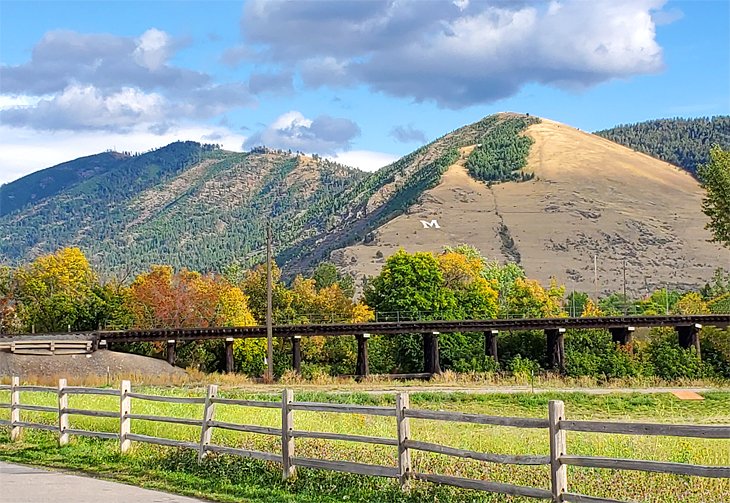
Upon glancing at the giant "M" affixed to Mount Sentinel in Missoula, just above the campus of the University of Montana, it's easy to see people navigating the zig-zagging trail up to the white-colored insignia. It's arguably one of the most traveled trails in the state.
The hike to Missoula's "M" is a relatively easy hike at only 0.75 miles long, but the switchbacks navigating the 600-plus feet of elevation test the legs of any hiker. Hikers can continue another steep mile up the trail to the summit, where the views of the valley are well worth the effort.
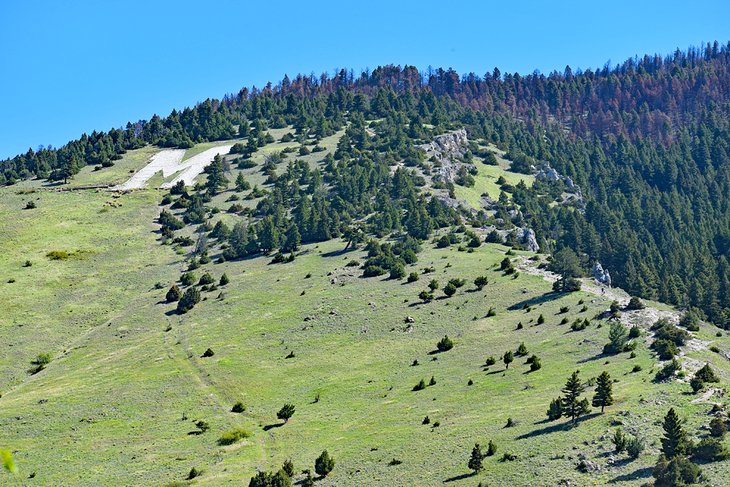
Missoula is not the only city with an iconic summit hike right outside the backdoor. For those visiting Bozeman, the College "M" Trail offers an equally steep trail to hike, as does the city of Butte atop the aptly named Big Butte. Similar overviews of a city are also found in Helena at the top of Mount Helena City Park.
- Read More: Attractions & Things to Do in Missoula
Continental Divide National Scenic Trail
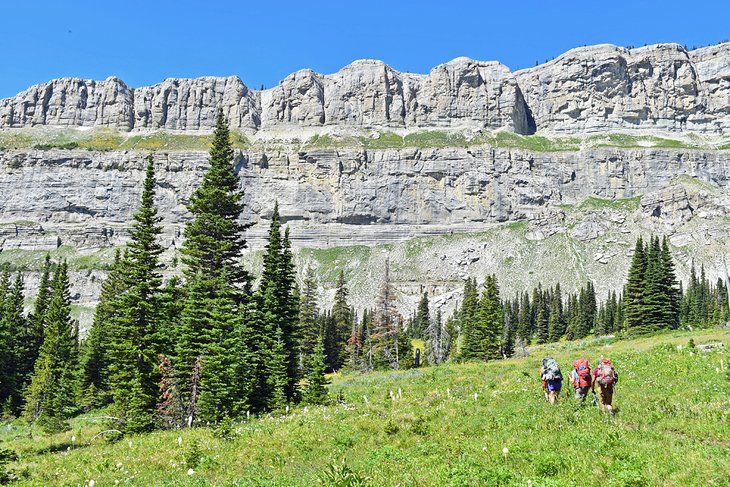
For those looking to go the distance in Montana, the nation-spanning Continental Divide National Scenic Trail (CDT) begins or ends in Montana (depending on which direction you head). It also passes through New Mexico, Colorado, Wyoming, and Idaho. But arguably the most scenic section of this approximately 3,100-mile trail strides through Big Sky Country.
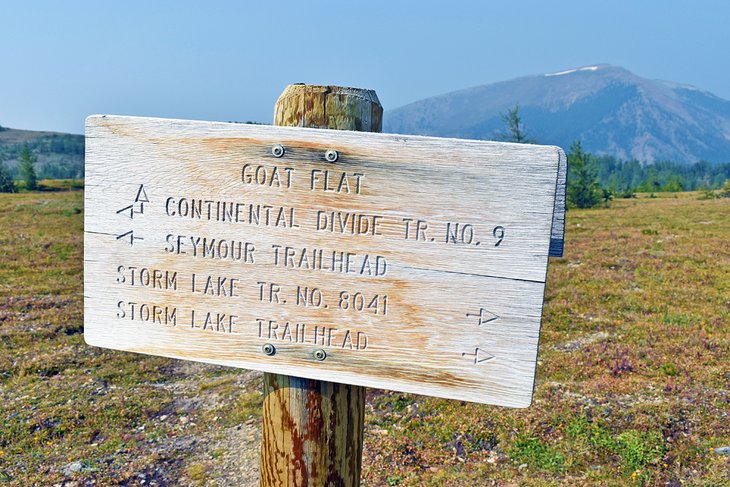
The trail's northern terminus is located within Waterton-Glacier International Peace Park. It crosses through iconic areas, including the Chinese Wall in the Bob Marshall Wilderness. Other CDT hiking points of interest in Montana include the Beaverhead, Bitterroot, and Pintler Mountains.
Day hiking options are available up and down the trail, though some areas, like the Chinese Wall, are hard to access without backpacking deep into the wilderness.
Pacific Northwest National Scenic Trail
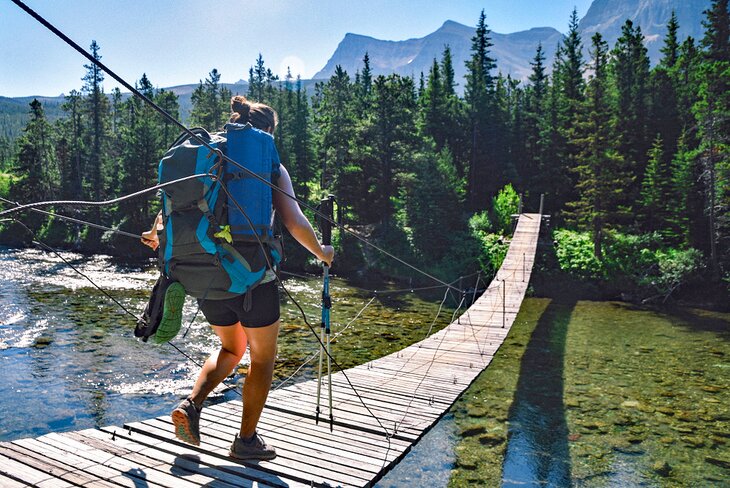
The Pacific Northwest National Scenic Trail (PNT) is another thru-hike that starts or ends in Montana. It spans approximately 1,200 miles between Glacier National Park in Montana and Olympic National Park in Washington and passes through a variety of outstanding terrain. The Selkirk Mountains, the North Cascades, and the Olympic Mountains are just a few of the vistas encountered along the way.
The Pacific Northwest Trail, established in 2009, is one of the newest additions to the National Scenic Trails collection. The trail is complete, but hikers looking to hike the entire thing will need some route-finding and adventure skills. Approximately 50 hikers accomplish the thru-hike each year, taking an average of 10 weeks to finish.
The prime window for thru-hiking is July through September. Section hiking is also available during this window. Day hiking is also accomplished but slightly hindered by the vast amount of wilderness the trail traverses through.
Map of Hiking Trails in Montana
More Related Articles on PlanetWare.com
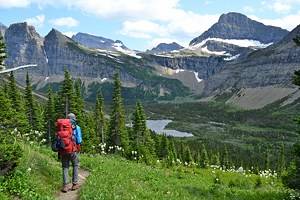
Hiking and Camping at Glacier National Park: Some of the best hiking trails in Glacier National Park lead to stunning places like Grinnell Glacier, Iceberg Lake, and the Ptarmigan Tunnel. Thanks to the abundance of space and hiking trails to explore in Glacier, as well as the semi-remote location of the national park, it's well worth the time to look into some of the best campgrounds in Glacier. To round out the experience, our guide to the Places to Visit in Glacier can help you plan out a memorable vacation.
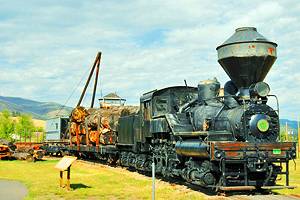
Montana Cities to Discover: For an ideal basecamp to discover hiking trails in Western Montana, the city of Missoula is a great place to explore. Farther east and surrounded by the Custer Gallatin National Forest, the city of Bozeman is also filled with collegiate appeal and easy access to the mountains. For a true mountain town getaway, the city of Whitefish is popular to visit throughout the year.


